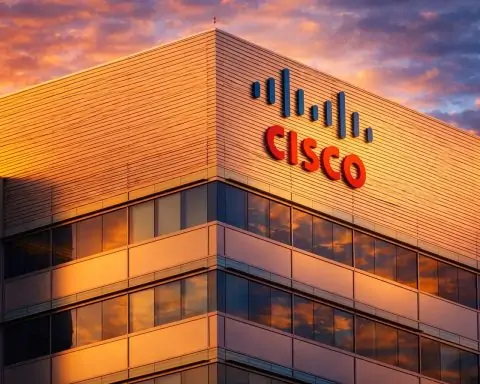- Activist push ignites rally: Shares of Six Flags Entertainment (NYSE: FUN) jumped about 17–18% on Oct. 21 after hedge fund Jana Partners disclosed a ~9% stake and announced NFL star Travis Kelce was joining the campaign for a shake-up [1] [2]. Kelce, a self-described “lifelong Six Flags fan,” said he wants to help make the parks “special for the next generation” [3] [4].
- Stock still under pressure: At midweek (Oct. 22), Six Flags was trading around the low $20s, roughly 55–58% below its mid-2024 highs [5] [6]. Analysts remain mixed: consensus is a “Moderate Buy” with price targets clustered near the mid-$30s (range ~$25–$44) [7]. For example, Oppenheimer holds an Outperform rating (12-mo. target ~$40), while Jefferies recently cut its 12-month target to $25 [8] [9].
- Merger and scale: Six Flags Entertainment (ticker FUN) is the combined company formed by the July 1, 2024 merger of Six Flags and Cedar Fair [10]. Cedar Fair shareholders now own a slight majority (~51%) of the merged firm [11]. The new Six Flags operates 42 parks (including 27 amusement parks and 15 water parks) across the U.S., Canada and Mexico, making it the largest regional theme-park operator in North America by park count [12] [13].
- Q2 results: weather woes: In Q2 2025 (ended June 29), Six Flags reported revenue of $930 million (down vs. year-ago due to a hard winter/spring) and EPS of only $0.26 (well below the $0.79 Wall Street expected) [14]. The company lost about $100 million (primarily from legacy Six Flags parks) and saw attendance of 14.2 million guests – about 9% below last year [15]. Management blamed poor weather (many rainouts and heat waves) and a “challenged consumer” for soft attendance and lower spending [16] [17].
- Summer rebound and guidance: As weather improved, attendance rebounded. Combined park visits over Labor Day 2025 were roughly 2% above 2024, and July 2025 visits were ~4% higher year-over-year at large parks [18] [19]. The company reaffirmed its full-year guidance of $860–910 million in Adjusted EBITDA [20] [21], noting that its merger synergies and cost cuts remain on track. Management said it will target $90 million in cost savings in H2 2025 and is even exploring divesting non-core assets (to pay down debt) as part of integration [22].
- Leadership shake-up: Six Flags’ CEO Richard Zimmerman (formerly Cedar Fair’s CEO) announced in Aug. 2025 that he will step down by year-end [23]. Non-Executive Chairman Selim Bassoul (former Six Flags CEO) is leading the search for Zimmermann’s replacement. In mid-October the board added Sachem Head partner Jonathan Brudnick and is planning further changes. Separately, the company disclosed that Chairman Bassoul and lead director Daniel Hanrahan will leave the board at year-end, to be replaced in 2026 by hospitality veteran Marilyn Spiegel [24]. (The moves are widely viewed as efforts to appease activists demanding fresh strategy.)
- Debt and leverage: The combined company carries heavy debt (about $5.5 billion, debt-to-equity ~3.1) [25]. Credit ratings were recently cut (S&P lowered Six Flags to BB- with a negative outlook) amid concerns over leverage [26]. High debt has spurred suggestions (from Land & Buildings hedge fund) to spin off park real estate into a REIT – a move management rebuffed during the merger [27].
- Analyst/Expert views: Equity analysts and experts are sharply divided. UBS analysts noted the “weather-related challenges” that dragged Q2 results but kept a Buy rating with a $40 price target [28]. Oppenheimer remains bullish (Outperform with ~$40 target), citing stable consumer spending and upcoming park investments. By contrast, Truist cut its rating to Hold and lowered its target to $27, and Land & Buildings (a 2% owner) has publicly pushed for asset monetization (citing ~$30/share land value) [29] [30]. Activist Sachem Head (a ~10% holder) holds a board seat, and even former Cedar Fair CEO Matt Ouimet has warned that “the company is troubled and has big decisions to make” [31].
Market Reaction and Stock Outlook
After the activist news, Six Flags’ stock (now trading as FUN) briefly hit ~$25–26 intraday on Oct. 21 [32]. By Oct. 22 it settled back into the low-$20s [33]. Investors are weighing the upside – a recent consensus target is around $34 (over 50% above current levels) [34] – against lingering risks. Next up, the company is expected to report Q3 results in early November; analysts forecast a seasonal boost from continued summer attendance and early 2026 season-pass sales. Forecasters are generally cautious: simplywall.st projects that Six Flags could grow to about $3.7 billion in revenue and ~$269 million in net income by 2028 (up from a loss today), implying a fair value around $31 per share [35].
Industry and Economic Context
The troubles at Six Flags/Cedar Fair reflect wider trends in the U.S. amusement-park industry. Consumers have been increasingly selective with leisure spending amid high inflation and interest rates. U.S. theme-park revenues were about $33 billion in 2025 (as per industry reports), but growth has slowed from post-pandemic surges. Adverse weather (especially spring rains in the Midwest) and a cautious consumer base hurt attendance early in 2025 [36] [37]. On the plus side, record summer travel in 2025 did bring more park visits (helped by discounted passes and promotions) [38] [39]. Major players like Disney and Universal have been expanding into Orlando and globally, raising the competitive bar. Amusement parks have been investing in new attractions (Six Flags is planning a new Saudi Arabia park in coming years [40]) and digital features to lure guests.
Looking Ahead
Six Flags Entertainment (FUN) finds itself at a crossroads. The influx of activist pressure – from celebrity investors to traditional hedge funds – has signaled a potential pivot in strategy. The company’s management has promised to leverage merger synergies, cut costs, and invest in park experiences to boost attendance [41] [42]. Financial experts point out that normalizing weather and a still-healthy consumer economy would help a recovery; UBS and Oppenheimer suggest that achieving full-year EBITDA near the top of guidance could send shares significantly higher [43] [44]. However, uncertainty remains high: further attendance swings, pushback on pricing or new attractions, and heavy debt service all loom as challenges. For now, the market reaction – from analyst price targets to credit-rating actions – underscores the mixed sentiment as Six Flags/Cedar Fair enters this next phase of integration and (hopefully) stabilization [45] [46].
Sources: Recent news, filings and analysis reports from Six Flags investor relations, BusinessWire, Reuters, Investing.com, Investopedia, analyst research and market commentary [47] [48] [49] [50] [51] [52] [53] [54]. (Data current as of Oct. 22, 2025.)
References
1. www.reuters.com, 2. www.investing.com, 3. www.investing.com, 4. www.investopedia.com, 5. ts2.tech, 6. www.investing.com, 7. ts2.tech, 8. ts2.tech, 9. www.investing.com, 10. investors.sixflags.com, 11. ts2.tech, 12. investors.sixflags.com, 13. ts2.tech, 14. www.marketbeat.com, 15. www.businesswire.com, 16. www.businesswire.com, 17. ts2.tech, 18. ts2.tech, 19. www.businesswire.com, 20. ts2.tech, 21. www.investing.com, 22. www.businesswire.com, 23. ts2.tech, 24. simplywall.st, 25. www.investing.com, 26. www.investing.com, 27. ts2.tech, 28. www.investing.com, 29. ts2.tech, 30. www.investing.com, 31. ts2.tech, 32. www.investing.com, 33. ts2.tech, 34. ts2.tech, 35. simplywall.st, 36. www.investing.com, 37. ts2.tech, 38. www.investing.com, 39. www.businesswire.com, 40. ts2.tech, 41. www.businesswire.com, 42. www.investing.com, 43. www.investing.com, 44. www.investing.com, 45. www.investing.com, 46. www.investing.com, 47. investors.sixflags.com, 48. www.reuters.com, 49. www.investing.com, 50. www.businesswire.com, 51. ts2.tech, 52. www.investing.com, 53. www.investing.com, 54. simplywall.st







